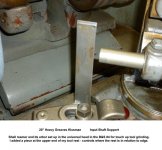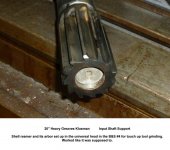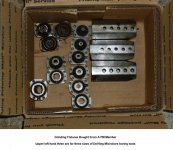jscpm
Titanium
- Joined
- May 4, 2010
- Location
- Cambridge, MA
I find the whole abrasive thing to be incredibly confusing and expect what I am doing now is probably totally wrong. You have aluminum oxide, silicon carbide, ceramic, diamond, etc. Then there are the bonds; vitrified, rubber, etc. For grinding edges on tooling, what abrasive setup would you recommend and why?







 . He posted a manual a bit ago that covers basic wheel dressing and some basics that are helpful:
. He posted a manual a bit ago that covers basic wheel dressing and some basics that are helpful:



